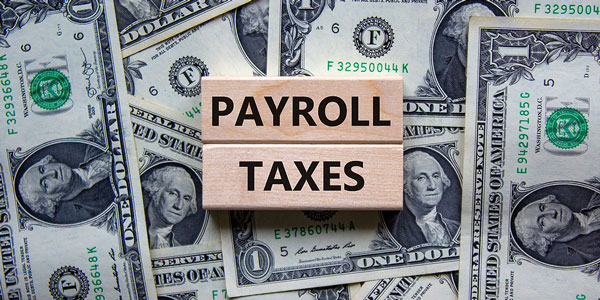
As a savvy investor, understanding the difference between short-term and long-term capital gains can really make a difference in your bottom line when it comes to filing taxes. While both can offer massive rewards depending on your investment strategy, they also carry vastly different taxation implications for investors. In this blog post, we'll dive into the world of capital gains, explaining what they are and how you can take advantage while minimizing your tax liability. Whether you're just starting out with investing or have years of experience under your belt, this is essential information any smart investor should know!
Definition of Short-Term and Long-Term Capital Gains:

Short-term capital gains are profits from the sale of assets held for less than one year. Long-term capital gains, on the other hand, are profits made from selling assets that have been held for more than one year.
Tax Implications:
The tax liability associated with short-term and long-term capital gains can vary greatly depending on your individual financial situation and other factors such as your filing status, income level, and even where you live. Ordinary income tax rates apply to short-term capital gains, which can reach up to 37%, whereas long-term capital gains may qualify for preferential tax treatment based on your level of income. This means that if you hold an asset for more than a year, you could see a significant reduction in the amount of taxes you have to pay on any gains from that asset.
How to Calculate Your Taxes on Short-Term or Long-term Capital Gains?
Calculating your taxes on short-term or long-term capital gains is fairly straightforward. First, you’ll need to determine the amount of gain or loss for the asset in question. This can be done by subtracting the purchase price from the sale price. Once you have determined this gain (or loss), you can then add up all of your capital gains and losses to get a total amount.
Finally, calculate your tax liability by using either short-term or long-term rates based on how long you held the asset. The IRS also has helpful online resources to help guide you through calculating your capital gains taxes accurately and efficiently.
Benefits of Holding Assets for a Shorter or Longer Period:
One of the major benefits of holding assets for a longer period is the ability to take advantage of preferential tax treatment. As we mentioned above, long-term capital gains are often eligible for more favorable tax rates than their short-term counterparts.
Additionally, by holding an asset for more than one year you will benefit from compounding interest and potentially higher returns over time depending on your strategy. This can be particularly beneficial if you are investing in stocks or other securities that may see large fluctuations in price over short periods of time.
On the other hand, holding an asset for a shorter period can allow you to capitalize on quick gains and reduce your exposure to any potential losses due to market volatility. Additionally, with a shorter investment horizon you can often take advantage of lower transaction costs.
Drawbacks of Holding Assets for a Shorter or Longer Period:
The primary drawback of holding assets for a shorter period is the fact that you are more likely to be taxed at higher rates (ordinary income tax rates) due to short-term capital gains. Additionally, there may be other potential risks associated with investing in a volatile market or asset class over a shorter period of time.
Conversely, when it comes to long-term investments there can be drawbacks as well. One of the biggest downsides is the potential opportunity cost associated with not taking advantage of quick gains in the market over short periods of time. In addition, if you hold an asset for too long and it depreciates in value, your losses could be difficult to recoup under preferential tax treatment.
Strategies for Minimizing Your Tax Liability on Capital Gains:

Now that you have a better understanding of the tax implications associated with short-term and long-term capital gains, here are some strategies to help minimize your tax liability:
• Consider investing in assets that are eligible for preferential rates, such as stocks or mutual funds.
• Take advantage of tax loss harvesting by selling losing investments to offset any potential taxable gains from other investment activities.
• Invest in assets for at least one year to benefit from lower long-term capital gains rates.
• Make use of retirement accounts like an IRA or 401(k) which can provide tax advantages while also allowing you to save for the future.
Common Mistakes to Avoid When Investing in Stocks, Bonds, ETFs, etc.
Investing in the stock market can be a great way to grow your wealth over time, but there are definitely some common mistakes to avoid.
• Don’t invest too heavily in one asset or sector. If you put all of your eggs into one basket, any negative movement could cause serious losses.
• Don’t be tempted by short-term gains and try to optimize your taxes by investing for at least one year if possible.
• Don’t chase after quick profits without doing your research first. Understand the company, its management, products/services, etc. before investing your hard-earned money.
• Don’t panic sell when the market dips – stay informed and take a long-term view of your investments.
Conclusion:
Investing in the stock market can be a great way to grow your wealth over time, but it’s important to understand the tax implications associated with short-term and long-term capital gains. By understanding how capital gains taxes work, you’ll be better equipped to make smart decisions and minimize your tax liability when investing in stocks, bonds, ETFs, etc. Additionally, remember to research any potential investments thoroughly before committing any of your hard-earned money. With these tips in mind, you should have no problem making wise investment decisions that will help secure your financial future!
FAQs:
Q: How does the IRS define long-term capital gains?
A: The IRS defines long-term capital gains as any asset held for more than one year before being sold.
Q: What types of assets are eligible for preferential tax rates on long-term capital gains?
A: Generally, stocks, mutual funds, ETFs, and other investment securities are eligible for preferential tax rates.
Q: What strategies can I use to minimize my tax liability on investments?
A: You can use strategies such as tax loss harvesting or investing in assets that qualify for lower long-term capital gains rates to minimize your tax liability. Additionally, consider using retirement accounts like an IRA or 401(k) which can provide tax advantages while also allowing you to save for the future.











